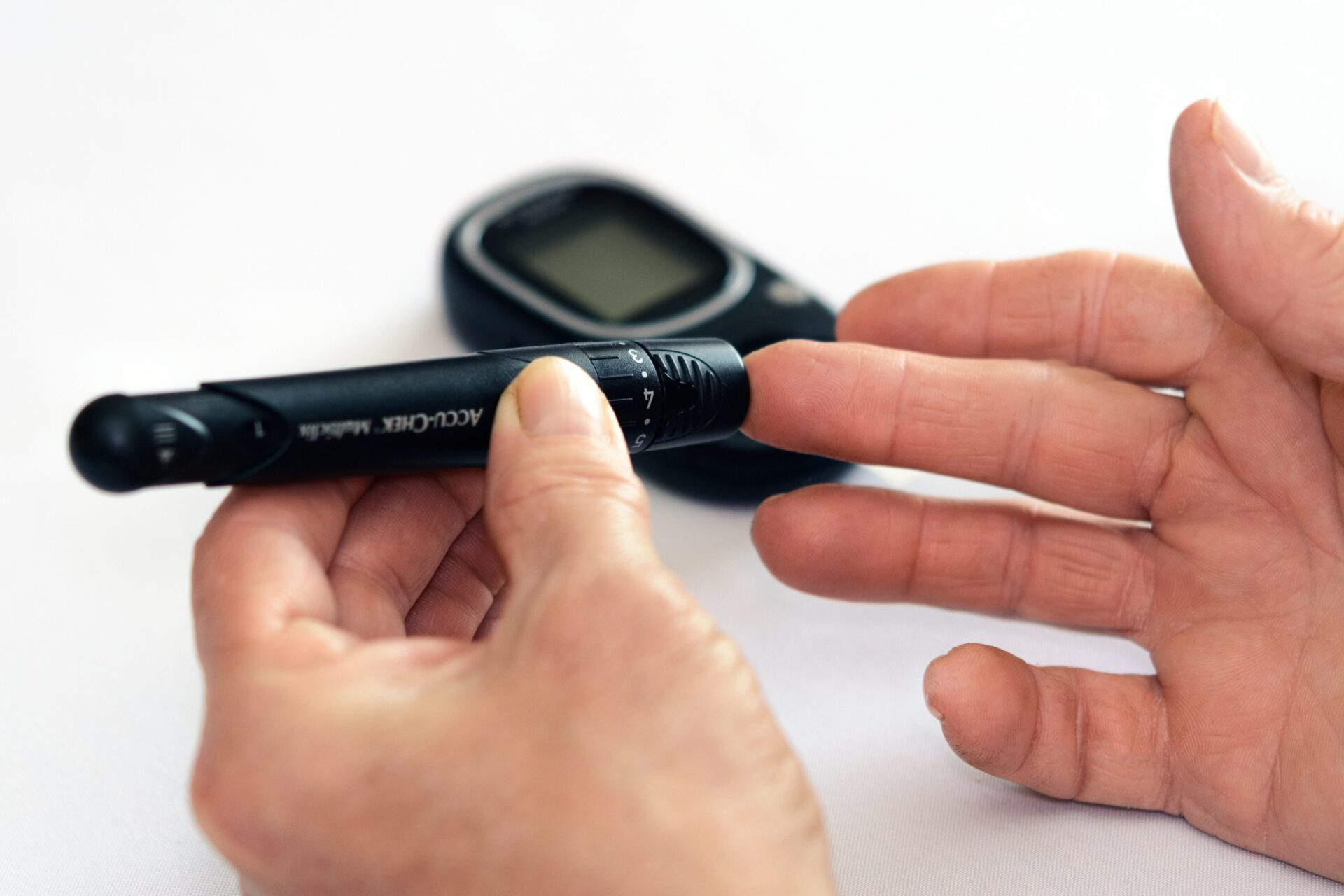Diabetes
Diabetes Mellitus
Diabetes is a number of diseases that involve problems with the hormone insulin. Normally, the pancreas (an organ behind the stomach) releases insulin to help your body store and use the sugar and fat from the food you eat. Diabetes can occur when the pancreas produces very little or no insulin, or when the body does not respond appropriately to insulin. People with diabetes need to manage their disease to stay healthy.
-
Type 2 diabetesA chronic condition that affects the way the body processes blood sugar (glucose).
-
Type 1 diabetesA chronic condition in which the pancreas produces little or no insulin.
-
PrediabetesA condition in which blood sugar is high, but not high enough to be type 2 diabetes.
-
Gestational diabetesA form of high blood sugar affecting pregnant women.
Dibetes complications often share the same risk factors, and one complication can make other complications worse. For example, many people with diabetes also have high blood pressure, which in turn worsens eye and kidney diseases.
- Heart disease and stroke: People with diabetes are two times more likely to have heart disease or a stroke as people without diabetes.
- Blindness and other eye problems:
- Damage to blood vessels in the retina (diabetic retinopathy)
- Clouding of the lens (cataract)
- Increase in fluid pressure in the eye (glaucoma)
- Kidney disease: High blood sugar levels can damage the kidneys and cause chronic kidney disease (CKD) If not treated, CKD can lead to kidney failure. A person with kidney failure needs regular dialysis (a treatment that filters the blood) or a kidney transplant to survive. About 1 in 3 adults with diabetes has CKD. You won’t know if you have CKD unless your doctor tests you for it.
- Nerve damage (neuropathy): One of the most common diabetes complications, nerve damage can cause numbness and pain. Nerve damage most often affects the feet and legs but can also affect your digestion, blood vessels, and heart.
- Amputations: Diabetes-related damage to blood vessels and nerves, especially in the feet, can lead to serious, hard-to-treat infections. Amputation can be necessary to stop the spread of infection.
Complications usually develop over a long time without any symptoms. That’s why it’s so important to make and keep doctor and dentist appointments even if you feel fine. Early treatment can help prevent or delay diabetes-related health conditions and improve your overall health.
Dr.Solis’s Diabetes Treatment Plan
Initial Evaluation
The first step to begin a medical treatment is to have an accurate diagnosis of the disease. Some situations such as extreme emotional situations, for example, a car accident, some medications (i.e corticosteroids) or even dehydration can raise blood glucose level in a non Diabetic person. It is not always Diabetes Mellitus the reason for increased blood sugar.
Through a thorough evaluation that includes family and personal medical history, symptoms, lab & blood work, and current lifestyle a diagnosis is drafted.
Lab & Blood Work
General wellness blood work along with specialized test based on the patients evaluation are requested to corroborate and confirm the diagnosis
Individually, custom-made meal treatment plan
Each patient is unique and therefore a personalized treatment plat has to be created form their illness. After a proper diagnosis has been made, my first priority is blood glucose stabilization, this is done my a combination diet change and medication when required. This helps stop current complications and prevent future ones. After the patient is stable, I create a custom made treatment plan that includes a meals based on the likes, lifestyle, and budget of the patient with the ultimate goal of removing Insulin shots by the end of the treatment which could take from a few week to a few months all depending on the initial condition of the patient
Follow up visit
We have monthly visits to check up on the progress of the treatment to adjusts for any changes base on the improvement of the condition.
Bi-Annually Follow up visits
After the initial treatment has been completed we perform visits every 6 months to mantain the Diabetes is in remission.
%
Number of amputations that were the result of a diabetic foot ulcer
Annual average insulin costs for type 1 diabetic patient in US Dollars
Accessible Health Care is Our Mission
info@shn.healthcare
Mexico City: +52 55 8421 9100



